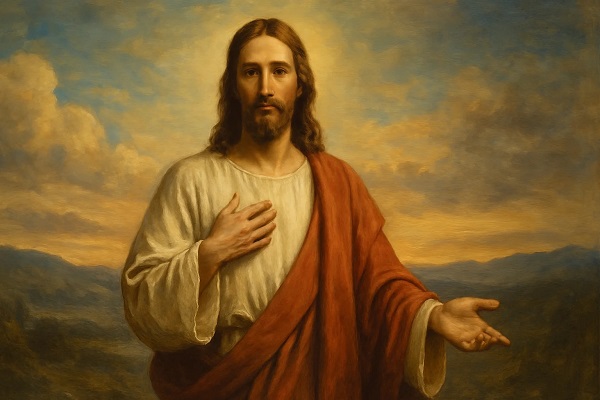The Teen Who Found Jesus on the Internet
Dylan had never set foot in a church.
At seventeen, his Sundays were reserved for sleeping in and scrolling TikTok. Religion had always seemed distant — something for old people or families who prayed before dinner. His mom used to wear a gold cross around her neck, but it had disappeared sometime after his dad left. They never talked about it.
Most days, Dylan spent hours online, bouncing between memes, gaming streams, and the occasional rabbit hole of conspiracy theories. It wasn’t that he was searching for something — not consciously, at least. But his browser history painted a different picture: “What happens after death,” “Does God exist,” “Why do I feel so empty?”
Late one night, with his earbuds in and the glow of his screen the only light in the room, he stumbled across a YouTube video titled “Why Jesus Still Matters.” The thumbnail looked cheesy — a man with a beard standing in front of a sunset. Dylan rolled his eyes but clicked anyway.
The guy in the video wasn’t a pastor. He didn’t wear a collar or speak in a preacher’s voice. He was young, maybe in his late twenties, with tattoos and a gentle cadence. “Maybe you feel like nobody sees you,” he said, looking straight at the camera. “But I promise you — Jesus does.”
Dylan paused the video. That sentence hit something raw.
He didn’t cry. Not then. But he replayed the video twice. The guy talked about grace like it was water, something you could fall into and not drown. “God doesn’t wait for you to be good,” he said. “He comes to you while you’re broken.”
That night, Dylan bookmarked the channel.
Over the next week, he binged every video. He didn’t tell anyone — not his friends, not his mom. He still swore, still skipped homework, still felt small most days. But he kept listening.
One night, a livestream started with a verse from the Gospel of John: “The light shines in the darkness, and the darkness has not overcome it.” Dylan didn’t know why, but he wrote it down on a scrap of paper and taped it to his wall.
He began noticing things.
A kid at school he used to mock — always quiet, always reading his Bible at lunch — didn’t flinch when someone knocked his books over. Instead, he bent down, smiled, and picked them up.
A waitress at the diner his mom worked at gave them a free meal when she overheard that their electricity had been shut off. “God bless you,” she whispered, touching his mother’s hand.
That Sunday, Dylan did something he never imagined. He typed “church near me” into Google and clicked on the first result.
It was a small storefront building with a faded sign and mismatched chairs. He sat in the back, hoodie up, ready to bolt at any moment. But when the music started — just a guitar and a woman singing about mercy — something inside him cracked open.
They didn’t ask him for anything. They didn’t single him out. But during the message, the pastor said, “Maybe there’s someone here who’s just been watching from a distance. And I want you to know — Jesus is already walking toward you.”
After service, an older man with a limp offered him a cookie and asked his name. Dylan mumbled it, expecting awkwardness. Instead, the man said, “Glad you’re here, Dylan. We’ve been waiting for you.”
The tears came later, on the bus ride home. He pressed his forehead against the window and let them fall, silent and warm.
He started going back.
It wasn’t perfect. He still argued with his mom. Still zoned out in math class. Still didn’t understand how prayer worked or what “being saved” really meant. But he felt different. Not fixed — just not alone anymore.
Online, he joined a Discord group run by the YouTube guy. They talked about real stuff: doubt, addiction, shame. No one pretended. No one preached. They just listened, prayed, encouraged. Sometimes Dylan typed out whole messages and deleted them. Other times he sent a single emoji — 🙏 — and someone would respond, “We’re with you.”
Months passed.
His mom noticed. “You’ve been… calmer lately,” she said one evening while folding laundry. “Like you’re not so angry all the time.”
Dylan shrugged. “I guess I’m figuring stuff out.”
She looked at him carefully, the way mothers do when they sense something they don’t yet understand. “Whatever it is,” she said, “keep going.”
One day, he found her wearing that gold cross necklace again. She didn’t mention it, and neither did he.
On his eighteenth birthday, Dylan stood in front of that same tiny church. His hands were shaking, and his voice cracked when he said yes to Jesus. Not because he had all the answers, but because he had tasted enough of the grace to know it was real.
The pastor prayed, and they baptized him in a plastic tub they’d hauled in from the back. The water was cold. Dylan came up coughing, laughing, blinking at the ceiling like he was seeing it for the first time.
The next day, he posted a picture on Instagram: him, soaked and smiling, captioned simply: “Found more than I was looking for.”
His old friends didn’t understand. Some unfollowed. A few mocked. But one — a quiet girl from his chemistry class — sent a DM: “I’ve been wondering if Jesus is real. Can I ask you something?”
He stared at the screen for a long time, then replied: “Of course. I used to wonder too.”
And in that moment, Dylan realized the story was only beginning.
The internet had shown him a lot of darkness. But it also showed him light. A strange light that shone into all the places he thought God would never go.
And the darkness had not overcome it.

